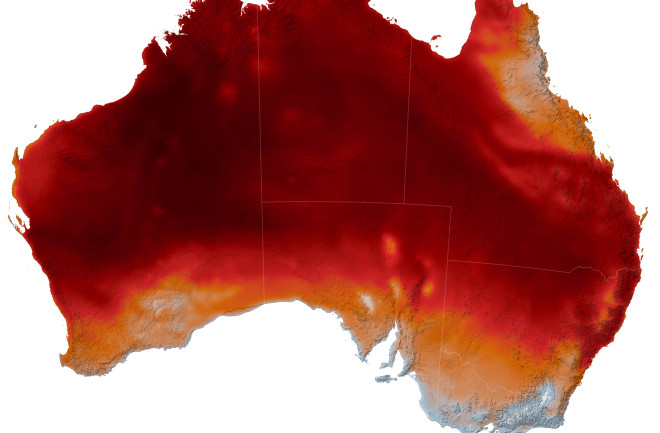Australia baked through an early-summer heatwave for several days in mid-December that fueled dozens of bushfires. This came after earlier heatwaves in previous months.
Western Australia has suffered the worst in the latest one, with temperatures reaching above 40 degrees C, or 104 F. Normal highs at that time of the year would be in the 80s.
Eastern parts of the country didn't escape the heat either, and that combined with dry conditions fueled the the Duck Creek Pilliga Forest Fire in New South Wales, seen in the satellite image above. As of Dec. 21, 2023, the blaze had scorched a little less than 500 square miles, about the size of New York City.
Australia’s fire season doesn't typically peak until January or February. But intense wildfire activity got an early start this year. According to Europe's Copernicus Atmosphere Monitoring Service, "large areas of northern Australia, particularly in the tropics, experienced increasingly large-scale seasonal bushfires throughout October and into November, with daily total FRP values significantly above the 20-year average in Western Australia and Northern Territory." (FRP is a measure of the rate of outgoing thermal radiative energy coming from a burning landscape fire.)
Since about Dec. 18, temperatures in Australia have moderated somewhat, helping firefighters battle the Pilliga fire. But while conditions have improved for now, the outlook for January through March is for unusual warmth:
The Australian Bureau of Meteorology forecasts that maximum temperatures will be in the highest 20 percent of the historical range for January through March across almost all of the country. Moreover, significant parts of the country are likely to be drier than normal.
Record dry conditions and above-average temperatures are expected to continue into 2024, thanks in large part to a strong El Niño, according to the country's National Council for Fire and Emergency Services.
El Niño's excess warmth will occur in a climate that's already hotter, thanks to human-caused climate change.

